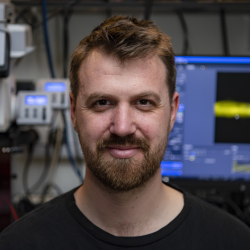Research Group
Biography & Research Overview
I am fascinated by how plants form some of the most beautiful and intricate structures we see in nature. Plant development incorporates growth, gene expression and biomechanics. How tiny cellular units are coordinated across tissues and organs to generate complex shapes and patterns is a central question in biology.
Plant cells are amazing. As well as being sites of photosynthesis and metabolism, they are key load-bearing structures, supporting the plant during growth, adapting to the environment and providing a tough outer surface to protect against the elements.
The cuticle is an intriguing structure. Formed as a bi-layer on the outer face of epidermal cells, it prevents water loss whilst protecting against pathogens and the environment. However, it has also been repurposed to in a completely different role, generating structural colour in certain flowers.
A number of flowering plants across angiosperms have evolved striking ways to attract pollinators. As well as having pigmentation to provide petal colour, they also reflect scattered light to produce iridescence, much like the reflected patterns on a CD. Floral iridescence is formed from regular striations on the cell surface. These ridges are formed through buckling of the cuticle due to mechanical instability during petal development. A model for how these striations form has been developed using data from Hibiscus trionium. We hypothesise that iridescence is not a trait strictly under genetic control, but emerges from cell growth, cuticle production and mechanics of how cuticle layers interact. However, it is unclear whether other iridescent flowers for ridges in the same way.
Using a quantitative microscopy, biomechanical measurements and genetic mutants, we will generate data for parameters to feed in to a growth-based finite element model to test the current hypotheses of cuticle ridge formation in other species. We will explore species with cuticle ridge structures that cannot be readily described using our current ideas to further develop the model. Our aim is to gain an understanding of a convergent trait that emerges due to mechanics rather than genes.
Previous Positions
2022 to 2025 - Postdoctoral Researcher - Richard Smith Group, John Innes Centre
2022 - BBSRC Career Development Fellow - Nédélec Group, SLCU
Qualifications
2017 to 2022 - PhD - Coen Group, John Innes Centre
2013 to 2016 - BSc Plant Biology - Aberystwyth University, Wales
Key Publications
‘Camelot: a computer-automated micro-extensometer with low-cost optical tracking’, (2025), BMC Biology 23, Issue 112.
‘Brassinosteroid coordinates cell layer interactions in plants via cell wall and tissue mechanics’, (2023), Science 380,pp.1275-1281.

